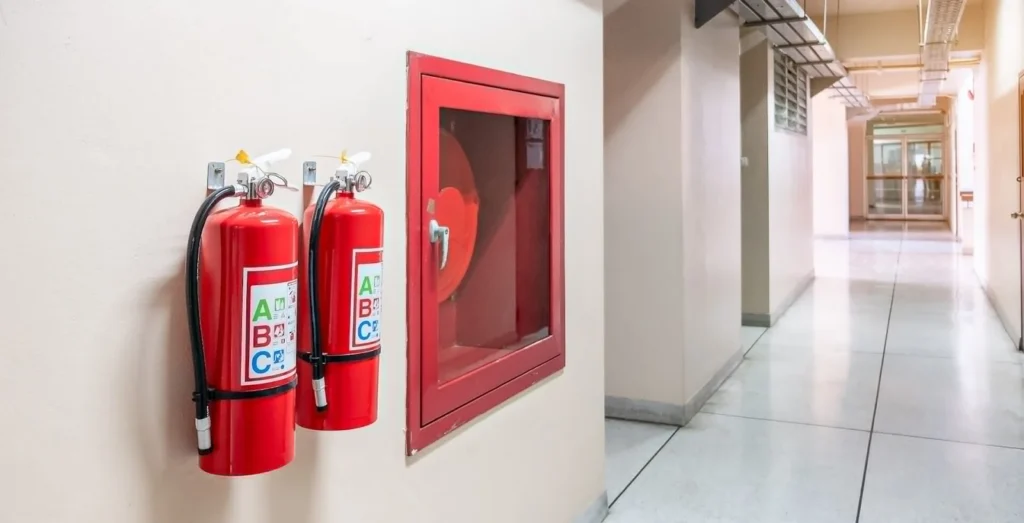Fire safety is an essential aspect of home ownership that is often overlooked until it’s too late. While many people are aware of basic fire safety principles, it’s crucial to understand the specifics that can make a significant difference in preventing fires and protecting your family and property. Incorporating regular fire risk assessments into your safety routine can further enhance your fire prevention strategy. This blog will cover essential fire safety tips every homeowner should know to ensure a safe living environment.
Understanding the Common Causes of Home Fires
Fires can start in a variety of ways, but some causes are more common than others. By understanding these common causes, you can take proactive steps to prevent them.
Cooking-Related Fires
Cooking is the leading cause of home fires, often due to unattended cooking or grease fires. It’s important to stay vigilant when cooking and never leave the stove or oven unattended. Keeping flammable items like kitchen towels, oven mitts, and wooden utensils away from the stove can also help reduce the risk of a fire starting.
Electrical Fires
Faulty wiring, overloaded outlets, and malfunctioning electrical appliances are common causes of electrical fires. It’s essential to have your home’s electrical system inspected regularly by a qualified electrician to ensure everything is up to code. Additionally, avoid overloading power outlets and replace damaged cords or appliances immediately.
Heating Equipment Fires
During the colder months, heating equipment such as space heaters, fireplaces, and furnaces are often used to keep homes warm. However, these can pose a significant fire risk if not used correctly. Make sure to keep flammable materials away from heating equipment and never leave them running unattended. Regular maintenance of your heating systems can also help prevent fires.
Installing and Maintaining Smoke Alarms
Smoke alarms are your first line of defense against a fire. They provide early warning, allowing you and your family to evacuate quickly. Every homeowner should understand the importance of installing and maintaining smoke alarms.
Placement of Smoke Alarms
Smoke alarms should be installed on every level of your home, inside bedrooms, and outside sleeping areas. In larger homes, it may be necessary to install multiple alarms on each level. It’s also important to place smoke alarms in the kitchen, but make sure they are positioned far enough away from cooking appliances to avoid false alarms.
Regular Testing and Maintenance
Testing your smoke alarms regularly ensures they are working correctly. Most smoke alarms have a test button that you can press to check if they are functioning. Additionally, replace the batteries at least once a year or when the low battery warning sounds. Smoke alarms should also be replaced every 10 years to ensure they are still effective.
Creating a Fire Escape Plan
In the event of a fire, having a well-thought-out fire escape plan can save lives. Every family should have a fire escape plan and practice it regularly.
Designing Your Escape Plan
When creating a fire escape plan, identify two exits from every room, such as a door and a window. Make sure all family members know how to use these exits and are aware of the designated meeting spot outside the home. It’s also important to plan for special circumstances, such as assisting young children, the elderly, or pets during an evacuation.
Practicing Your Fire Escape Plan
Regularly practicing your fire escape plan ensures that everyone in the household knows what to do in case of a fire. Practice the plan at least twice a year, and consider doing so at different times of the day to simulate various scenarios. Make sure everyone in the household is familiar with the sound of the smoke alarm and understands that once it sounds, they must evacuate immediately.
Fire Extinguishers: A Must-Have in Every Home
Fire extinguishers are an essential tool in fire safety, allowing you to put out small fires before they become uncontrollable. Knowing how to use and maintain a fire extinguisher can make all the difference in an emergency.
Selecting the Right Fire Extinguisher
There are different types of fire extinguishers, each designed to tackle specific types of fires. The most common type for home use is a multi-purpose extinguisher, labeled as Class ABC, which can be used on fires involving ordinary combustibles, flammable liquids, and electrical equipment. Place fire extinguishers in easily accessible areas, such as the kitchen, garage, and near exits.
Proper Use and Maintenance
It’s crucial to know how to use a fire extinguisher properly. The PASS method (Pull the pin, Aim the nozzle, Squeeze the handle, and Sweep the base of the fire) is a simple way to remember the steps. Regularly check the pressure gauge on your fire extinguishers to ensure they are in working order. If the extinguisher has been used, even partially, it should be replaced or recharged immediately.
The Importance of Fire-Resistant Materials
Using fire-resistant materials in your home can provide an added layer of protection in case of a fire. This can be especially important in areas prone to wildfires or for homeowners looking to enhance their fire safety measures.
Fire-Resistant Building Materials
When building or renovating your home, consider using fire-resistant materials such as brick, stone, or metal for the exterior. Fire-resistant roofing materials, like metal or asphalt shingles, can also help reduce the risk of a fire spreading. For the interior, consider fire-resistant drywall, insulation, and flooring options.
Fire-Resistant Furniture and Decor
Choosing fire-resistant furniture and decor can also help slow the spread of a fire. Look for furniture made with fire-resistant materials or treated with fire retardants. Curtains, rugs, and other fabrics should also be labeled as fire-resistant. While these materials won’t prevent a fire from starting, they can give you more time to evacuate safely.
Conclusion
Fire safety is a responsibility that every homeowner must take seriously. By understanding the common causes of home fires, installing and maintaining smoke alarms, creating a fire escape plan, having fire extinguishers on hand, and using fire-resistant materials, you can significantly reduce the risk of a fire in your home. Similarly, obtaining an EICR Cert can complement your fire safety efforts by ensuring that all electrical systems in your home are up to standard. Regularly reviewing and updating your fire safety measures ensures that you are prepared in the event of an emergency. Remember, fire safety is not just about protecting your property—it’s about protecting the lives of your loved ones. Taking the time to implement these essential fire safety tips can make all the difference, If you want to stay updated with posts like this, please follow us on 2A MAGAZINE.







